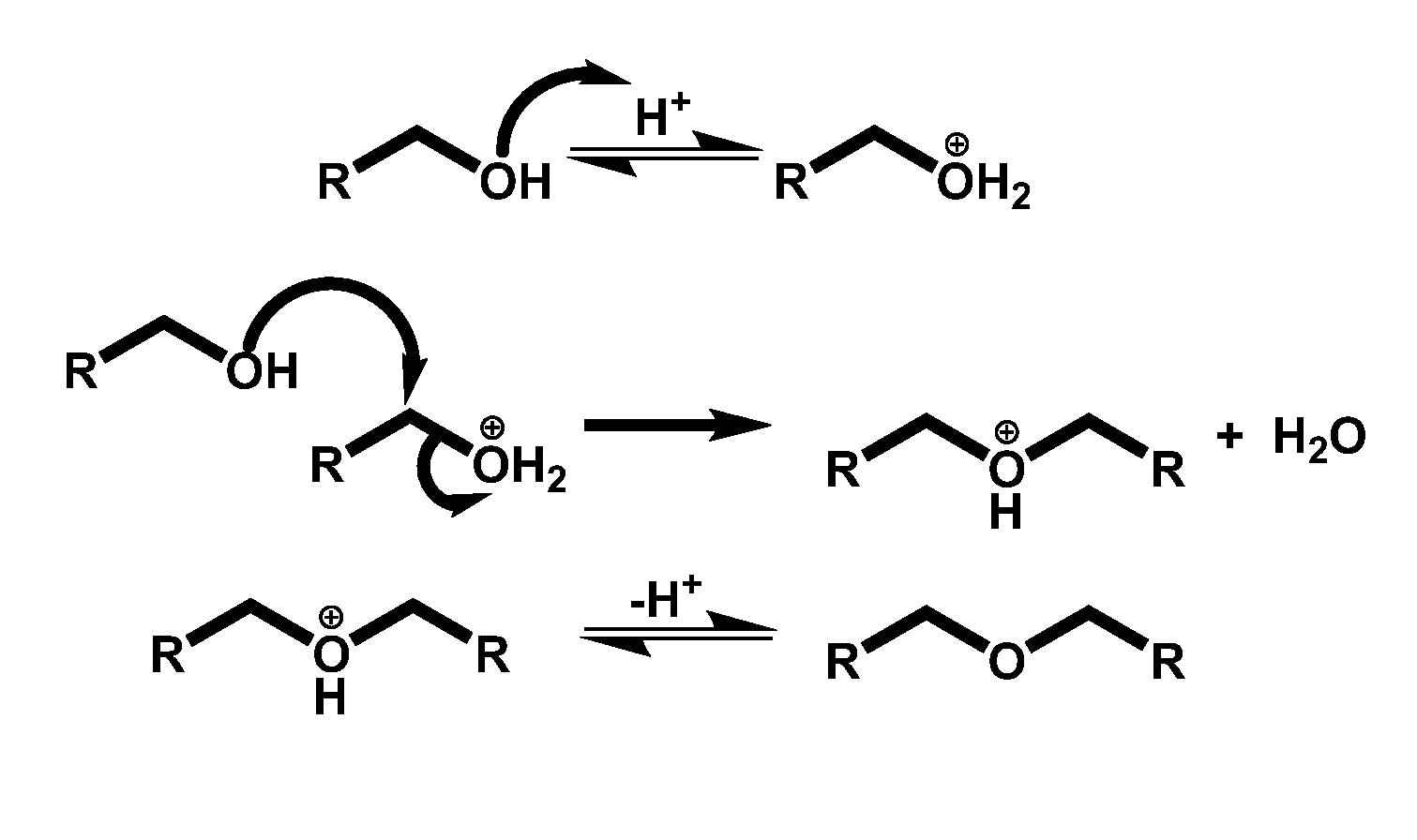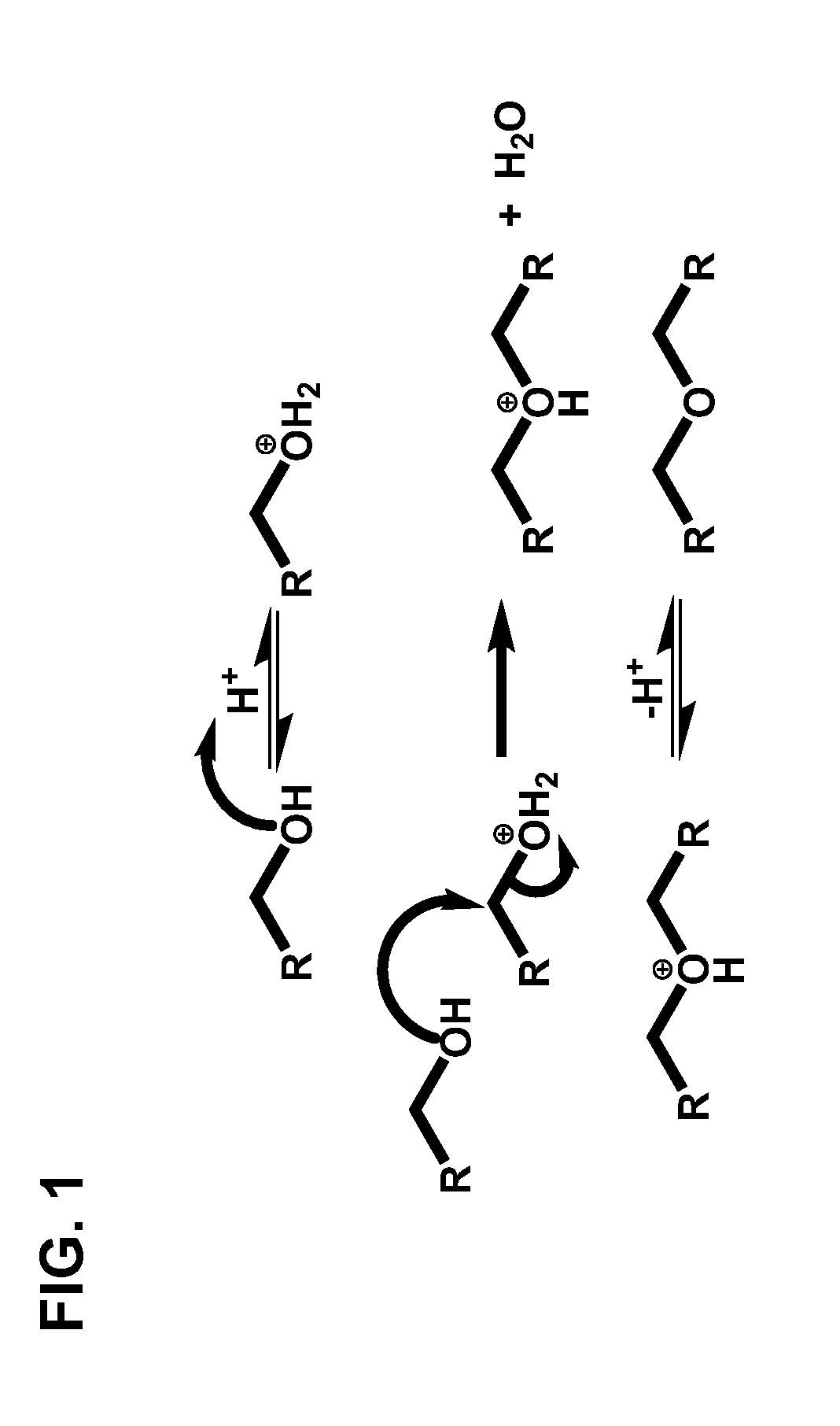Condensation of glycols to produce biofuels
a technology of biofuels and glycols, which is applied in the activation/preparation of catalysts, physical/chemical process catalysts, metal/metal-oxides/metal-hydroxide catalysts, etc., can solve the problem that glycols are not suitable for direct blending into fuels, and achieve the effect of preventing degradation and facilitating utilization as feedstock
- Summary
- Abstract
- Description
- Claims
- Application Information
AI Technical Summary
Benefits of technology
Problems solved by technology
Method used
Image
Examples
examples
[0026]The following examples are each intended to be illustrative of a specific embodiment of the present invention in order to teach one of ordinary skill in the art how to make and use the invention. They are not intended to limit the scope of the invention in any way.
example i
[0027]Preparation of Catalysts: 40 wt % H4SiW12O40 / SiO2 was prepared by incipient wetness impregnation. H4SiW12O40 (Sigma-Aldrich) was dissolved in ethanol and added dropwise to Davicat SI 1103 (320 m2 / g, −40 / +60 mesh.) Samples were sealed for 24 hours and then dried for 12 hours at 90° C. in flowing nitrogen.
[0028]1 wt % Pt—WO3 / ZrO2 was prepared by precipitation of Zr(OH)4 followed by the loadings of tungsten and platinum via incipient wetness impregnation. Pt was loaded onto the catalyst using aqueous hexachloroplatinic acid. Catalysts were dried at 150° C. for 6 hours, and calcined at 300° C. overnight in flowing air.
[0029]H-MOR (Si / Al=10), NH4-USY (Si / Al=2.6), and TPA-ZSM-5 (Si / Al=15) were obtained from Zeolyst International. Extrudates were crushed and sieved to −20 / +40 mesh. Zeolites containing template or in the ammonium form were converted into the acidic form by calcining in a muffle furnace under flowing air prior to use. Excess air was flowed over the catalyst while the s...
example ii
[0030]Hypothetical Example: Passivation of a Zeolite Catalyst with Either Poly(phenylmethyl)siloxane or Tetraethylorthosilicate: Zeolite catalysts useful in certain embodiments of the invention may be chemically-modified to passivate (i.e., block active sites on) the external surface of the catalyst, thereby increasing selectivity for the production of LMWPG. One examples of how this can be achieved is outlined in U.S. Pat. No. 6,228,789, which pertains to a method for silylation of zeolite catalysts, and is incorporated herein by reference.
[0031]A zeolite H-ZSM-5 was contacted to incipient wetness with a 50 wt % solution of poly(phenylmethyl)siloxane (PPMS) in cyclohexane, and the catalyst was not pre-calcined prior to contacting. After loading of the catalyst, it was dried and calcined at 538° C. for 6 hrs. Alternatively, the H-ZSM-5 catalyst was loaded with a 50 wt. % solution of tetraethylorthosilicate (TEOS) under conditions identical to those used for loading with PPMS.
PUM
| Property | Measurement | Unit |
|---|---|---|
| pressure | aaaaa | aaaaa |
| temperature | aaaaa | aaaaa |
| pressure | aaaaa | aaaaa |
Abstract
Description
Claims
Application Information
 Login to View More
Login to View More - R&D
- Intellectual Property
- Life Sciences
- Materials
- Tech Scout
- Unparalleled Data Quality
- Higher Quality Content
- 60% Fewer Hallucinations
Browse by: Latest US Patents, China's latest patents, Technical Efficacy Thesaurus, Application Domain, Technology Topic, Popular Technical Reports.
© 2025 PatSnap. All rights reserved.Legal|Privacy policy|Modern Slavery Act Transparency Statement|Sitemap|About US| Contact US: help@patsnap.com



